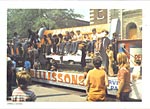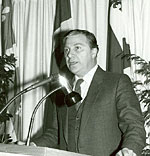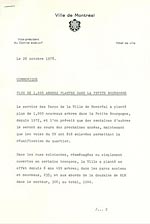

The end of an era
The attempts made in the 1970s to revitalize local political life also stemmed from the desire to improve the quality of life in an urban environment. Reformists denounced the anarchic growth witnessed in the post-war period and called for the adoption of master plans to ensure the city’s harmonious development.
They were opposed to the extreme centralization of the municipal government and wanted districts to play a new role in the decision making process.
The Civic Party, aware that it was losing ground, tried to pursue a new course of action. The plan centered on the development of major projects, and the growth of the downtown core gave way to the development of local infrastructures, based on the redevelopment of Montréal districts.
In 1978, the appointment of Yvon Lamarre as chairman of the executive committee coincided with that trend. At the beginning of the 1980s, the Administration adopted a series of measures to revitalized old sectors and commercial streets, boost the construction of new dwellings and set up houses of culture throughout the city.
The Civic Party was thus able to remain in power for a certain time, but the Opposition, namely the MCM, was growing in popularity. Fifteen MCM and three MAG candidates were elected in 1982. For the first time, the Civic Party had 48% of votes. In 1986, Jean Drapeau withdrew from the race.
























